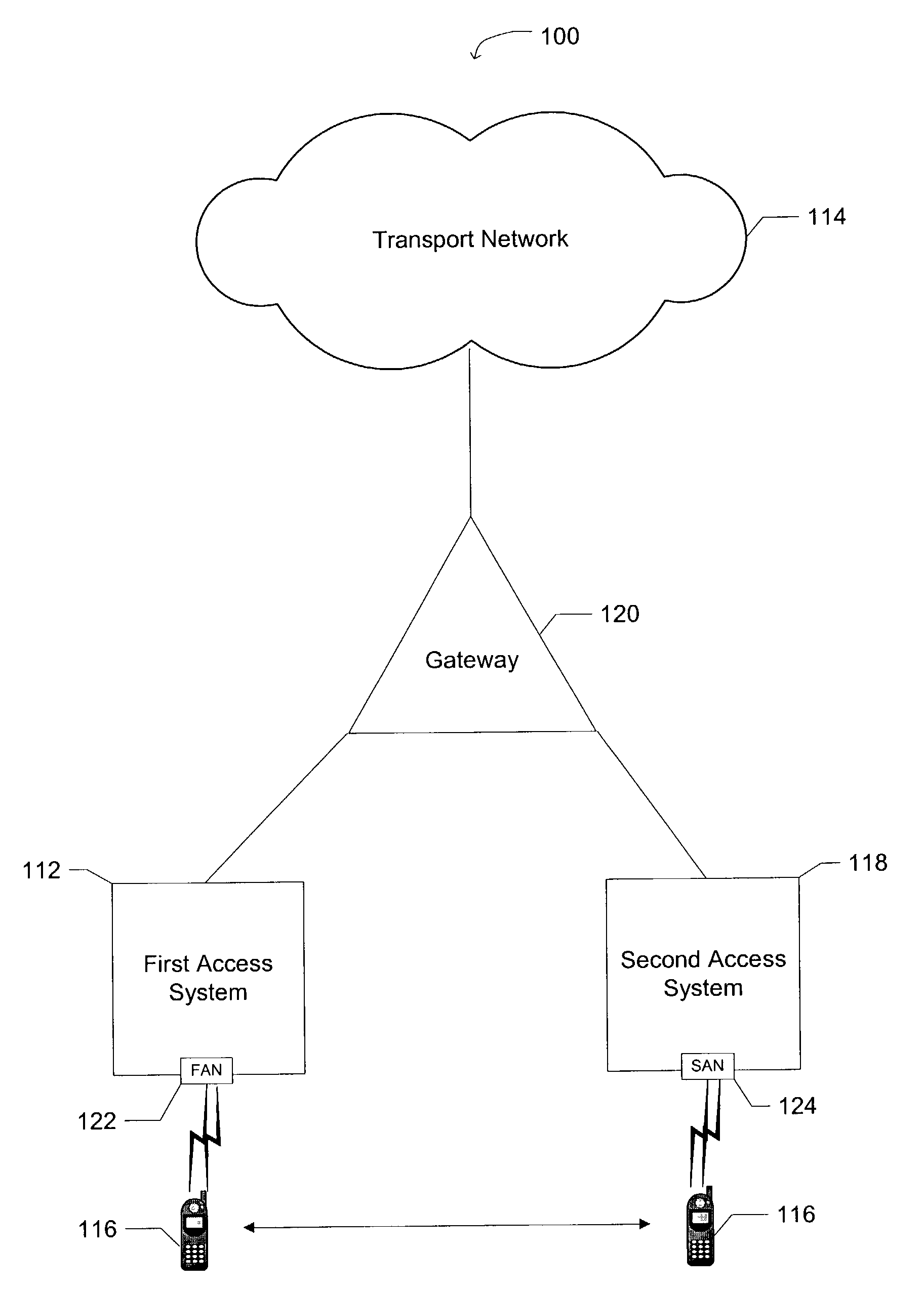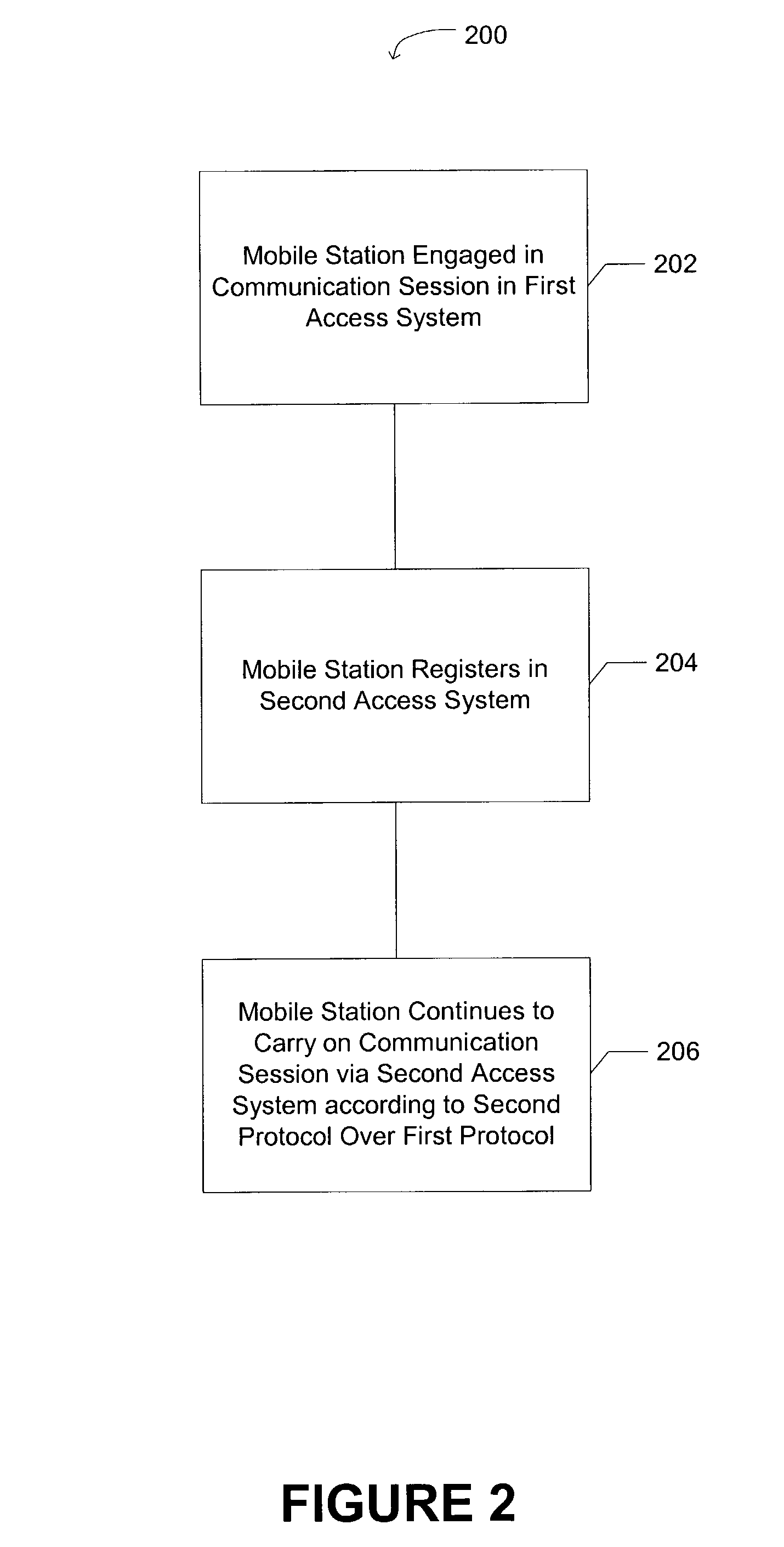Method and system for intersystem wireless communications session hand-off
a wireless communication and inter-system technology, applied in the field of telecommunications networks, can solve the problems of not being able to hand-off calls between private and public wireless networks, requiring a different telephone at work, and not being able to meet the needs of public wireless networks, so as to reduce the complexity of mobile stations, and reduce the number of components
- Summary
- Abstract
- Description
- Claims
- Application Information
AI Technical Summary
Benefits of technology
Problems solved by technology
Method used
Image
Examples
Embodiment Construction
[0046]As noted above, various aspects and advantages of an exemplary embodiment of the method and system for intersystem wireless communication session hand-off may become apparent by reading the following specification. With reference to the accompanying drawings, the following sections illustrate several of the various aspects and advantages.
1. First to Second Access System Hand-off
[0047]A. Exemplary Architecture of the Access Systems
[0048]Referring to the drawings, FIG. 1 generally depicts an arrangement 100 for carrying out an exemplary embodiment of the invention. As shown in FIG. 1, a first access system 112 is located downstream from a common transport network 114. The first access system 112 provides a first communication path for communications exchanged between the common transport network 114, and a mobile station 116 when the mobile station 116 is operating in the first access system 112. Included in the first access system is a first access node 122. When registered and...
PUM
 Login to View More
Login to View More Abstract
Description
Claims
Application Information
 Login to View More
Login to View More - R&D
- Intellectual Property
- Life Sciences
- Materials
- Tech Scout
- Unparalleled Data Quality
- Higher Quality Content
- 60% Fewer Hallucinations
Browse by: Latest US Patents, China's latest patents, Technical Efficacy Thesaurus, Application Domain, Technology Topic, Popular Technical Reports.
© 2025 PatSnap. All rights reserved.Legal|Privacy policy|Modern Slavery Act Transparency Statement|Sitemap|About US| Contact US: help@patsnap.com



